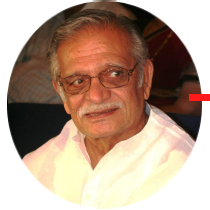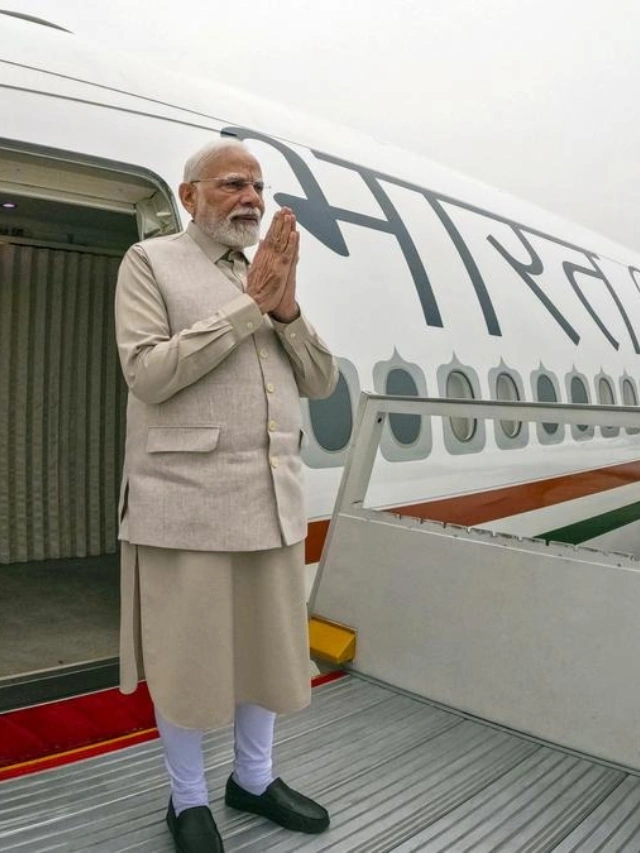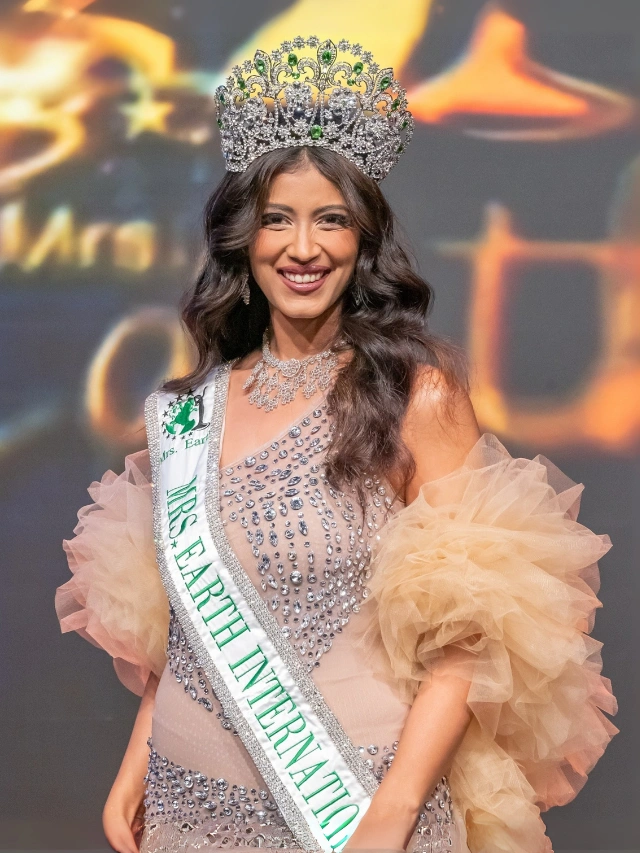Sampooran Singh Kalra (Gulzar)
Gulzar stands among the greatest Urdu poets of our time. His extraordinary legacy spans poetry, lyrics, screenwriting, and filmmaking in Hindi cinema. Born as Sampooran Singh Kalra on August 18, 1934, he has received remarkable recognition throughout his brilliant career. His accolades include 5 Indian National Film Awards, 22 Filmfare Awards, an Academy Award, and a Grammy Award. The Jnanpith Award, India’s highest literary honor, recognized his literary excellence in 2024.
Gulzar’s creative vision has shaped both poetry and cinema profoundly. His movies portray human relationships caught in social issues, and his distinctive narrative style uses flashbacks to tell compelling stories. His poetry and lyrics have blossomed through collaborative efforts with legendary music directors like R.D. Burman, Salil Chowdhury, Vishal Bhardwaj, and A.R. Rahman. His influence reaches into academia too – he served as Chancellor of Assam University starting April 2013.
CEO’s | Actors | Politicians | Sports Stars
Let’s take a closer look at Gulzar’s remarkable experience, from his early days and the story behind his famous pen name to his rise as a celebrated filmmaker. We’ll learn about his timeless songs, cinematic vision, literary contributions, and the personal and professional legacy that continues to inspire generations of artists and audiences alike.

Early Life and the Making of Gulzar
Gulzar full name and family background
Born into a Sikh family, Sampooran Singh Kalra, who we now know worldwide as Gulzar, came into this world on August 18, 1934. His birthplace was a small town called Dina in the Jhelum District of British India (now part of Pakistan). His father Makhan Singh Kalra ran a small business, and his mother was Sujan Kaur. Life dealt him an early blow when he lost his mother as an infant. His relationship with his stepmother never quite worked out. The young boy spent most of his childhood at his father’s shop instead of home. School didn’t interest him much, but books sparked something special in him, even though he didn’t pass his intermediate exams.
Impact of Partition on his early years
The catastrophic Partition of 1947 changed everything for Gulzar just as he entered his teenage years. His family, like millions of others, had to leave their ancestral home and start fresh across the newly drawn border. They first moved to Amritsar, then settled in Delhi’s Sabzi Mandi area. Young Gulzar saw things no child should see. He later spoke about stepping over dead bodies—half-burnt and dismembered—while the smell of rotting corpses filled Subzi Mandi during the riots. These haunting memories of violence and displacement showed up repeatedly in his work. He once said in an interview that he wrote about Partition because “he had seen Partition, read about Partition, but could not write in those days”.
First jobs and literary influences
Money was tight, and Gulzar had to stop his studies since his father couldn’t afford them anymore. His family needed support, so he started working at a Delhi petrol pump. Mumbai (then Bombay) beckoned with better opportunities, and he made the bold move to the city. He picked up whatever work he could find, including a job at a Worli garage. At Vichare Motors on Bellasis Road, he mixed paint colors to fix damaged cars. “I had a knack for colors,” he once said about this time. Books remained his true love through these tough times. Someone handed him “The Gardener” by Rabindranath Tagore. This book lit a fire in him to become a writer, though his father wasn’t happy about it.
Adoption of the pen name ‘Gulzar’
Mumbai’s literary scene drew him in quickly. He became a regular at Association of Progressive Writers meetings, where he met many established writers, including Shailendar, a prominent film lyricist back then. Though born Sampooran Singh Kalra, he first wrote as “Gulzar Deenvi”—Deenvi coming from his hometown Dina. Later, he kept it simple with just “Gulzar,” a name that would become legendary in Indian cinema and literature. His father, who once scolded him for writing, never imagined this pen name would belong to one of India’s most celebrated literary figures. These early experiences—from Partition’s horrors to working odd jobs while chasing his writing dreams—built the foundation for his remarkable journey ahead.
From Garage to Lyrics: The Start of a Creative Journey
Joining the Progressive Writers’ Association
During his early days in Mumbai, Gulzar worked as a car mechanic at a garage in Worli while nurturing his love for literature. His job gave him time to read books and build his literary dreams. He felt drawn to the Progressive Writers’ Association (PWA), a group of forward-thinking literary minds. PWA meetings changed his creative path and helped him connect with big names in film and literature. These Sunday gatherings brought him close to poet-lyricist Shailendra and famous director Bimal Roy, who would shape his career path. Their support made the shy young poet think over a career in films.
First break with ‘Bandini’ and S.D. Burman
The year 1963 saw Gulzar step into Hindi cinema as a lyricist with Bimal Roy’s film “Bandini”. Funny enough, Gulzar said no at first, telling Roy, “I don’t want to be a lyricist”. He had strong feelings against the Hindi film industry until then. The legendary music director S.D. Burman made him think again. Shailendra, who wrote other songs for the film, gave him a shot at writing “Mora Gora Ang Layle”. Bimal Roy wanted a song with Vaishnav bhajan touches for a specific scene. Gulzar spent five days crafting lyrics that met this need and captured a young woman’s emotional awakening. Lata Mangeshkar’s beautiful rendition became a hit right away.
Rise as a lyricist in the 60s and 70s
Following his successful debut, Gulzar wrote lyrics and dialogs for Hrishikesh Mukherjee’s “Aashirwad” in 1968. His career didn’t take off right away. The song “Humne Dekhi Hai Un Aakhon Ki Mehekti Khushboo” from “Khamoshi” (1969) put him in the spotlight. This moving composition showed off Gulzar’s unique poetic style with its unusual imagery and emotional depth. He built strong partnerships with music directors like Hemant Kumar, Salil Chowdhury, and most importantly, R.D. Burman. His work in “Anand” (1971) and “Mere Apne” (1971) with Salil Chowdhury made his name even bigger. These partnerships let his unique lyrical voice grow as he developed his signature style.
Gulzar’s songs that became timeless classics
Among Gulzar’s most enduring contributions stands “Humko Man Ki Shakti Dena” from “Guddi” (1971). This deep composition started as a scene where the main character leads a school prayer. The song grew beyond the movie and became a prayer song in schools across India. “Tere Bina Zindagi Se” from “Aandhi” (1975) captured lost love’s essence so well that it remains the go-to song for romantic melancholy.
Gulzar’s work with R.D. Burman created gems like “Musafir Hoon Yaaron” from “Parichay” (1972), a deep look at life’s path. Through the 1970s, his songs in films like “Khushboo,” “Mausam,” and “Kinara” showed how well he could mix deep thoughts with relatable emotions. He worked with every major music director of that time—from Shankar Jaikishan and Laxmikant-Pyarelal to Madan Mohan. These partnerships helped Gulzar become a lyricist whose words touched hearts, sparked minds, and captured life’s complex experiences.
The Director Emerges: Gulzar’s Cinematic Vision
Movies directed by Gulzar in the 70s and 80s
Gulzar moved from writing to filmmaking with his 1971 directorial debut “Mere Apne,” which adapted the Bengali film “Apanjan.” This started his remarkable 20-year career as a director. His second film “Koshish” (1972) showed the life struggles of a deaf-mute couple and proved his skill at handling unique subjects. The 1970s saw him create several acclaimed films like “Parichay” (1972), “Achanak” (1973), “Aandhi” (1975), “Khushboo” (1975), “Mausam” (1975), and “Kinara” (1977). He continued his creative streak in the 1980s with “Angoor” (1982), “Namkeen” (1982), “Ijaazat” (1987), and “Libaas” (1988)—though “Libaas” stayed unreleased for many years. His final film “Hu Tu Tu” (1999) completed his legacy of 17 directorial works.
Themes of human emotion and social issues
Gulzar’s films took a closer look at complex relationships and human connections against social backdrops. “Aandhi” broke new ground by showing a political leader’s personal life when Indian cinema rarely touched such themes. “Mausam” explored abandonment and moral responsibility through a man who finds his former lover’s daughter. His movies struck a perfect balance between entertainment and social commentary. “Maachis” (1996) tackled sensitive issues like the aftermath of the 1984 anti-Sikh riots and terrorism in Punjab. Unlike his commercial contemporaries, Gulzar focused on emotional truth and psychological depth instead of formula-based storytelling. His characters stayed relatable despite their complex moral situations.
Use of flashbacks and narrative style
Gulzar created his own unique cinematic language with non-linear stories and poetic visual compositions. He mastered the use of flashbacks, which showed clearly in films like “Aandhi” and “Ijaazat” where past memories shape present moments. “Achanak,” based on the famous K.M. Nanavati case, used a broken timeline to reveal the protagonist’s motives bit by bit. His background in poetry shaped his visual style, creating frames that looked like moving poems with careful imagery and symbols. His dialog writing brought literary quality to everyday conversations while staying authentic. Even his adaptation of Shakespeare’s “Comedy of Errors” into “Angoor” kept both the original story’s essence and Gulzar’s poetic touch.
Collaborations with actors and musicians
Gulzar built strong creative partnerships with actors who gave their best performances under his direction. Sanjeev Kumar worked with him in seven films including “Koshish,” “Aandhi,” and “Angoor.” He helped Jeetendra show his dramatic skills beyond his commercial image in “Parichay” and “Khushboo.” His work with Vinod Khanna in “Achanak” and “Meera” created memorable performances. In music, his long partnership with R.D. Burman produced some of Hindi cinema’s most loved soundtracks. Films like “Aandhi” and “Ijaazat” had songs that became cultural landmarks. After “Maachis,” he started working with Vishal Bhardwaj, a partnership that continued long after he stopped directing. This showed his skill at working with new generations of filmmakers.
Poetry, Prose, and Beyond: The Literary Side of Gulzar
Gulzar poetry style and language
A linguistic virtuoso, Gulzar writes mainly in Urdu and Punjabi, but his creative work spans Braj Bhasha, Khariboli, Haryanvi, and Marwari. His poetry follows the Triveni style – a three-line form that mirrors the mythological hidden Saraswati river, where deeper meaning flows beneath the first two lines. His unique style comes from the way he mixes multiple languages in one poem. He once said, “People have prejudices and divide languages,” and expressed this thought in a triveni: “Aao ab zabaanein baant le apni apni hum / Na tum sunogee baat na humko samajhna hai / Do anpadhon ko kitni mohabbat hai adab se”. His poetry runs so deep in Indian culture that some works like “Hum Ko Man Ki Shakti Dena” – now a morning prayer in many schools – have grown beyond their creator’s identity.
Books and short stories authored
An extensive literary output marks Gulzar’s career beyond films. His poetry collections feature Chand Pukhraaj Ka, Raat Pashminey Ki, and Pandrah Paanch Pachattar. His narrative skills shine in short story collections like Raavi-paar (known as Dustkhat in Pakistan) and Dhuan. 100 Lyrics and its sequel Another 100 Lyrics stand out as brilliant collections of his poems from film and non-film albums. He showed his storytelling magic in Gulzar’s Angoor, where he explores human relationships with deep empathy. His stories range from Partition tales (Raavi) to stories about human greed and its effects. His nine-year project A Poem A Day shows his love for poetry – he picked and translated 365 contemporary poems from 34 languages across India.
Gulzar quotes that reflect his philosophy
Philosophical depth runs through Gulzar’s thoughts about life and art. He believes “Poetry is not about personal pain or tragedy. It should reflect society’s grief,” highlighting literature’s role in society. About language, he says: “I believe words should amaze or amuse. Only then will the listener want to understand the meaning of the song”. He worries about preserving language heritage, warning that without protecting mother tongues, “children will soon lose out on words like bichhoo and chhipkali because their parents use ‘scorpion’ and ‘lizard’ in daily conversations”. His belief that “Poetry is not just for syllabus; it must be woven in life” shows how he wants to make literature part of everyday life.
Work in television and children’s content
Television revealed another side of Gulzar’s creative genius. He created lyrics and dialogs for many Doordarshan shows including Jungle Book, Alice in Wonderland, and Hello Zindagi. He directed the acclaimed series Mirza Ghalib (1988) with Naseeruddin Shah, bringing the famous Urdu poet’s life to screen. His series Kirdaar (1993-1995) brought touching short stories from renowned Indian writers to life. He adapted Munshi Premchand’s works in Tehreer Munshi Premchand Ki (2004) for TV audiences. Beyond adult content, he’s created impressive children’s material, including works for the Karadi Tales audiobook series. At a literature event, he pointed out the gaps in children’s literature, noting that “sparing Bengali, Marathi and Malayalam, not much was being contributed for children’s literature in the country”.
Recognition, Family, and Legacy
A Legacy Beyond Words
Gulzar’s remarkable trip from a garage mechanic to one of India’s most celebrated creative minds has without doubt changed artistic excellence in multiple domains. His extraordinary versatility shines through his work as a poet, lyricist, screenwriter, and filmmaker. Each role shows his unique sensibility and deep understanding of human emotions. He started his career reluctantly with “Bandini.” This hesitant step grew into a creative odyssey that spanned several decades. His work earned him unprecedented recognition including an Oscar, a Grammy, and India’s highest literary honor – the Jnanpith Award.
The Poet’s Vision
Of course, Gulzar’s distinctive cinematic style carries his poetic sensibilities’ unmistakable mark. His films take a closer look at complex human relationships against sociopolitical backdrops. He uses innovative narrative techniques like his signature flashbacks. Unlike many commercial filmmakers, he chose emotional authenticity and psychological depth over formulaic storytelling. His cinematic language flows from his poetic foundations. This creates visual compositions that feel like moving poems with carefully crafted imagery and symbolic elements.
Words That Surpass Time
Gulzar’s mastery over language remains his most striking quality. He blends multiple languages with innovative imagery and deep philosophical insights. His work appeals to people across generations. His words have become part of India’s cultural fabric, from school prayer songs to reflections on social issues. His steadfast dedication to preserving linguistic heritage goes beyond his own work. Projects like “A Poem A Day” celebrate India’s rich poetic traditions across 34 languages.
A Cultural Icon
Gulzar stands tall as a cultural icon after decades of creative work. His influence reaches way beyond entertainment. His work shows his belief that art must serve a social purpose while remaining available to ordinary people. Despite his numerous accolades, he approaches his craft with humility and dedication. Gulzar’s legacy lies in knowing how to turn everyday experiences into profound artistic expressions. These expressions touch hearts, stimulate minds, and capture human experience in all its dimensions.
Key Takeaways
Discover the remarkable transformation of Gulzar from a humble garage mechanic to India’s most celebrated poet-filmmaker, whose artistic journey spans multiple languages, mediums, and generations.
- From Trauma to Art: Partition’s devastating impact on young Gulzar became a recurring theme in his works, transforming personal tragedy into universal artistic expression.
- Reluctant Genius: Despite initially refusing to work in films, Gulzar’s debut with “Bandini” (1963) launched a legendary career spanning poetry, lyrics, and filmmaking.
- Linguistic Virtuoso: His effortless blending of Urdu, Punjabi, Hindi, and regional languages created a unique poetic style that transcends cultural boundaries.
- Cinematic Poetry: Gulzar’s films prioritized emotional authenticity over commercial formulas, using innovative flashback techniques and symbolic imagery to explore complex human relationships.
- Cultural Legacy: From school prayer songs to Oscar-winning lyrics, his words have become deeply embedded in Indian culture, proving that art can serve both entertainment and social purpose.
Gulzar’s journey exemplifies how personal struggles, when channeled through artistic vision, can create timeless works that resonate across generations and linguistic barriers.
Also Read: Journey of Ustad Bismillah Khan, Khushwant Singh
FAQ
Who is Rakhee Gulzar?
Rakhee Gulzar, born Rakhee Majumdar on August 15, 1947, in West Bengal, India, is a renowned Indian actress known for her work in Hindi and Bengali cinema. She made her Hindi film debut with “Jeevan Mrityu” (1970) and went on to star in over 100 films across four decades. She won two National Film Awards and three Filmfare Awards. In 2003, she was honored with the Padma Shri, India’s fourth-highest civilian award. Rakhee was married to poet-lyricist Gulzar, but they later separated. They have a daughter, Meghna Gulzar, a noted filmmaker.
Who is Meghna Gulzar?
Meghna Gulzar, born on December 13, 1973, in Mumbai, India, is an acclaimed writer, director, and producer. She is the daughter of Gulzar and Rakhee Gulzar. Meghna started her career as a writer and assistant director before making her directorial debut with “Filhaal…” (2002). She gained widespread acclaim for films like “Talvar” (2015), “Raazi” (2018), and “Sam Bahadur” (2023). Known for her realistic storytelling and in-depth research, Meghna continues to be one of the most respected filmmakers in Indian cinema today.
What are some heart-touching Shayaris by Gulzar?
Gulzar’s Shayari beautifully captures deep emotions, relationships, and nostalgia. Some of his most touching lines include:
• “Tere jaane se to kuch badla nahi, raat bhi aayi thi aur chand bhi tha, magar neend nahi.” (Even though you are gone, nothing has changed. The night came, the moon shined, but I couldn’t sleep.)
• “Achchi kitabein aur achche log turant samajh mein nahi aate, unhe padhna padta hai.” (Good books and good people take time to understand, they must be read deeply.)
• “Dil dhoondhta hai phir wahi fursat ke raat din.” (The heart longs for those carefree days and nights again.)
These shayaris reflect Gulzar’s profound way of expressing emotions.
What are some of Gulzar's two-line Shayaris?
Gulzar’s two-liners are simple yet impactful. Some of his best ones include:
• “Kabhi to chaunk ke dekhe koi hamari taraf, kisi ki aankhon mein humko bhi intezaar dikhe.” (Someone should glance at me with surprise, and I too should see longing in their eyes.)
• “Raat bhar tanhaai ki ek saal mein, zindagi ka ek aur saal beet gaya.” (A year passed by in just one lonely night.)
• “Chupke se bheegi raat mein, khushbu chura ke le gaya.” (Silently, on a rainy night, the wind stole away the fragrance.)
His couplets capture love, longing, and the passage of time.
What are some famous quotes by Gulzar?
Gulzar’s quotes are deeply philosophical and emotional. Here are a few:
• “Mitti ki bhi khushboo hoti hai, apne hi desh mein.” (Even the soil has a unique fragrance in one’s homeland.)
• “Jab bhi tanhaai ka ehsaas hota hai, tum yaad aate ho.” (Whenever I feel lonely, I remember you.)
• “Zindagi yun hui basar tanha, kaarwaan saath aur safar tanha.” (Life was spent alone; there was a caravan, but the journey was lonely.)
His words beautifully express emotions and the essence of life.
What themes are prevalent in Gulzar's poetry?
Gulzar’s poetry revolves around themes of love, nostalgia, separation, social issues, and human emotions. He masterfully captures the pains of unfulfilled love, memories of childhood, and societal struggles. His words have a universal appeal, making readers feel deeply connected to his emotions. His style is simple yet profound, often evoking strong imagery. His poetry is admired across generations and has been translated into multiple languages.
Which books has Gulzar authored?
Gulzar has written several books in poetry, short stories, and lyrics. Some of his most famous books include:
• “Raavi Paar” – A collection of short stories, many inspired by Partition.
• “Pukhraj” – A collection of his selected poems.
• “Half a Rupee Stories” – Short stories depicting Indian life and emotions.
His books reflect his deep observations about life, love, and society.
What does the name 'Gulzar' mean?
The name ‘Gulzar’ is of Persian origin and means “garden” or “rose garden”. It symbolizes a place of beauty, peace, and creativity—which perfectly describes his poetic and artistic soul. His real name is Sampooran Singh Kalra, but he adopted ‘Gulzar’ as his pen name early in his career. Today, the name is synonymous with lyrical excellence, poetry, and cinema.
How old is Gulzar?
Gulzar was born on August 18, 1934, making him 90 years old in 2025. Despite his age, he remains active in literature and cinema, continuously inspiring younger generations. With a career spanning over six decades, he has contributed immensely to poetry, films, and storytelling, earning accolades worldwide.
What is Gulzar's real name?
Gulzar’s real name is Sampooran Singh Kalra. He was born in Dina, Punjab, British India (now in Pakistan). After the Partition of India in 1947, he moved to Delhi and later to Mumbai, where he built his career as a poet, lyricist, screenwriter, and director. His pen name, ‘Gulzar’, became iconic in the world of poetry and cinema.
What is Gulzar's religion?
Gulzar was born into a Sikh family, but his works transcend religious boundaries. His poetry and films often explore universal human emotions rather than religious themes. Over the years, he has been an advocate of secularism, believing in humanity above all religions. His stories focus on love, social justice, and human relationships rather than religious identity.
What is included in Gulzar's filmography?
Gulzar has had a legendary career as a lyricist, screenwriter, and director. His notable contributions include:
• As a Lyricist: “Tere Bina Zindagi Se Koi,” “Tujhse Naraz Nahi Zindagi,” “Jai Ho”
• As a Director: Mere Apne (1971), Aandhi (1975), Maachis (1996)
• As a Screenwriter: Anand (1971), Namak Haraam (1973), Masoom (1983)
He won an Oscar for “Jai Ho” (Slumdog Millionaire) and multiple National Film Awards for his poetic storytelling.




